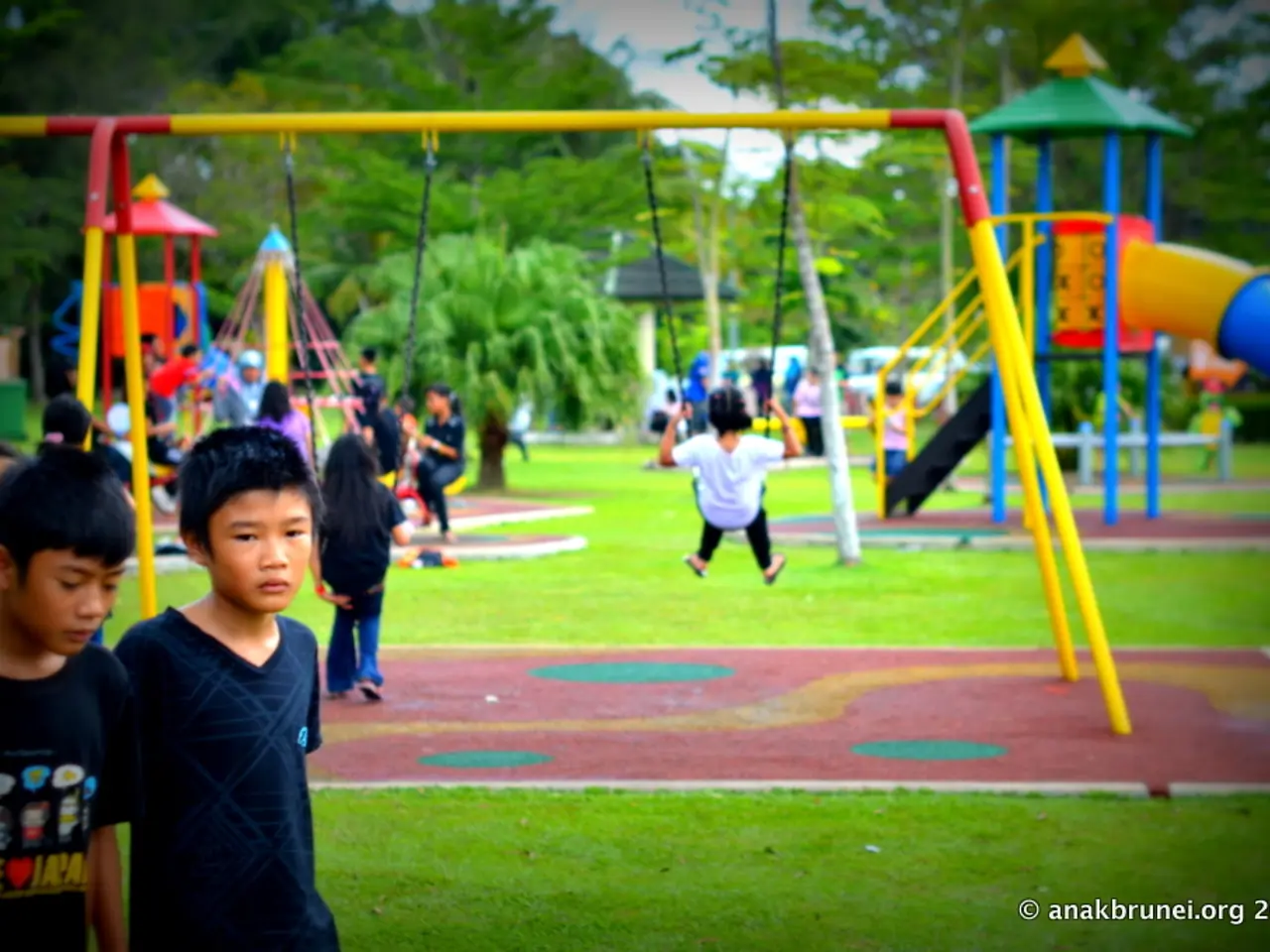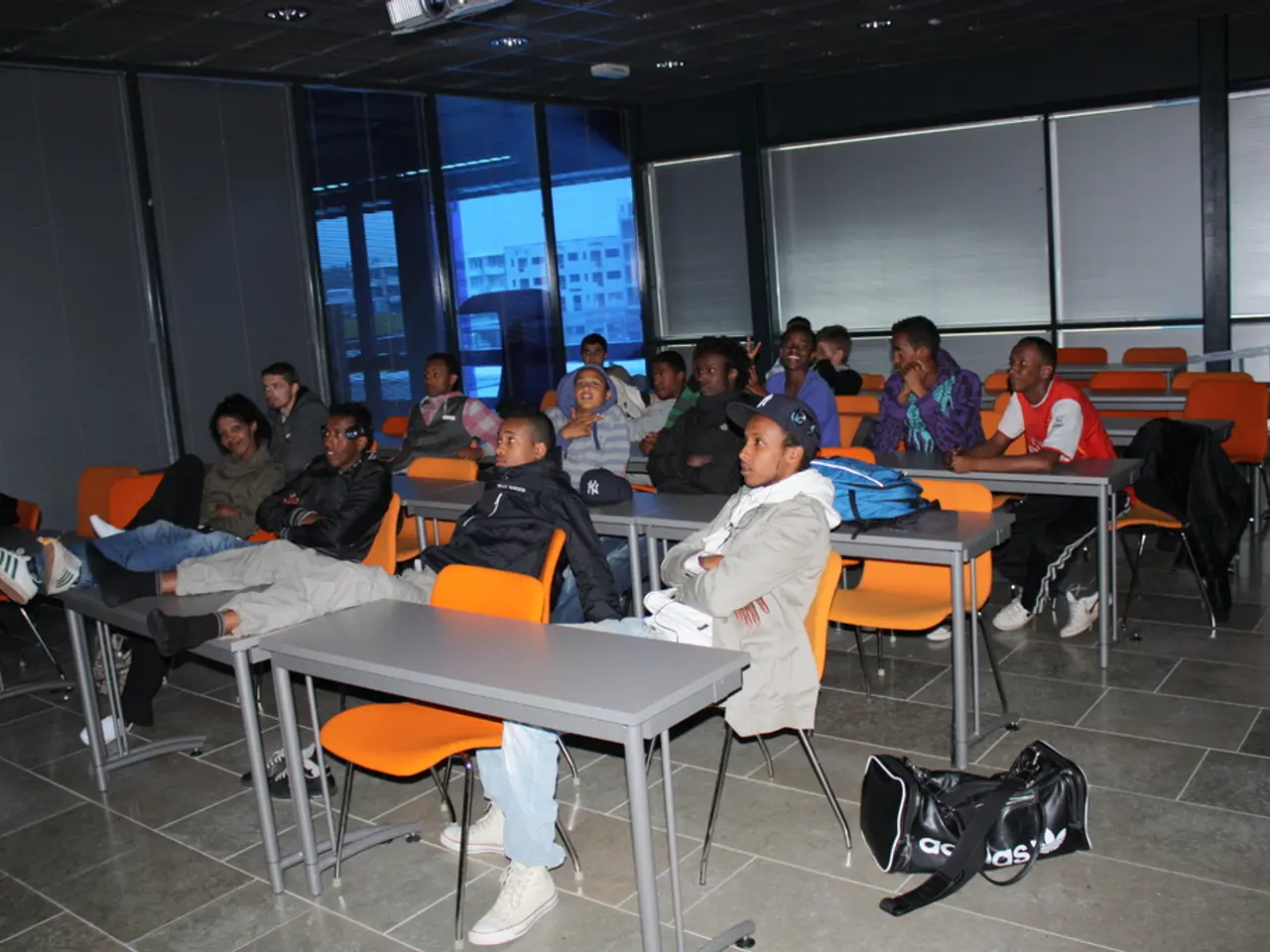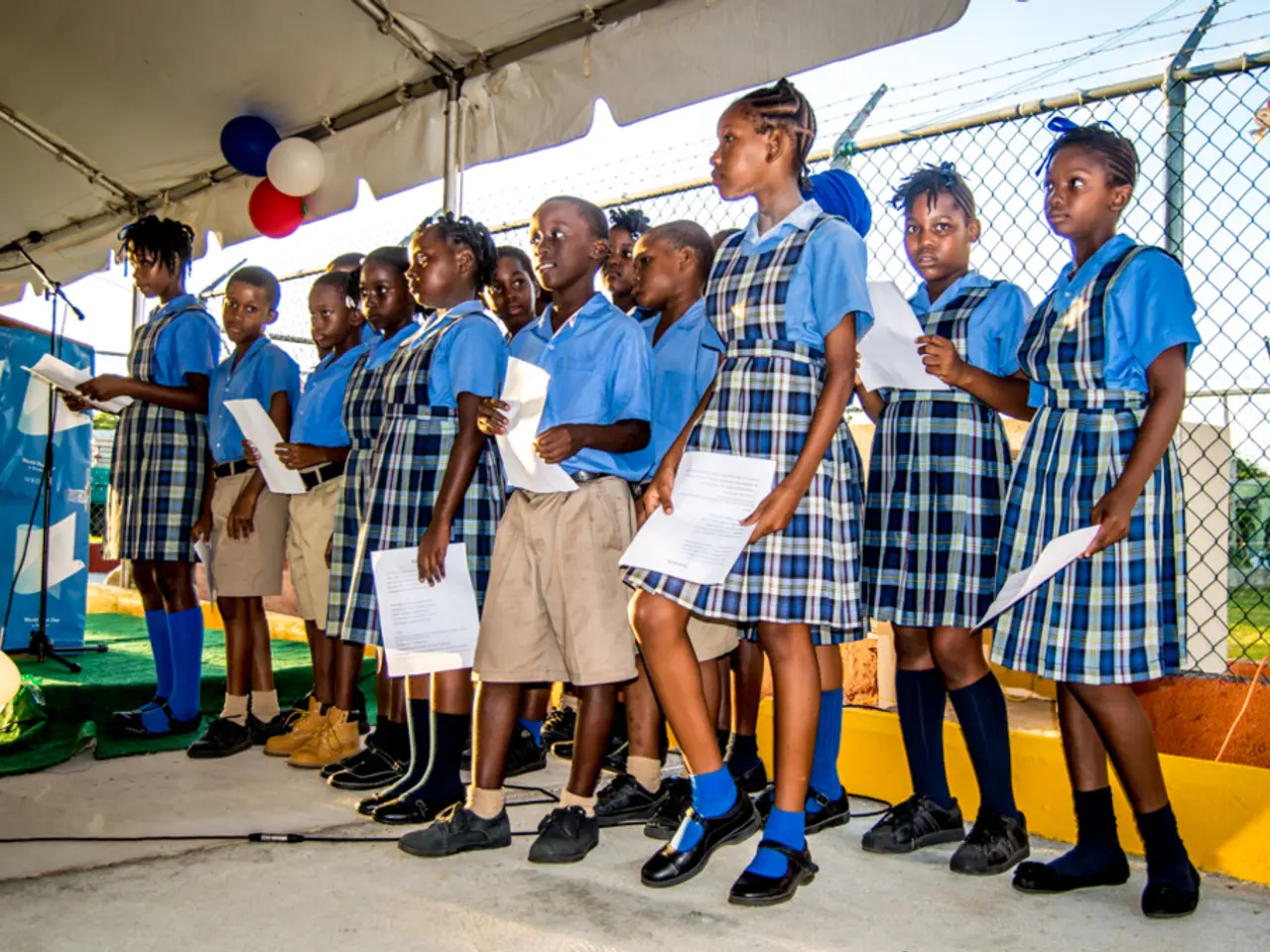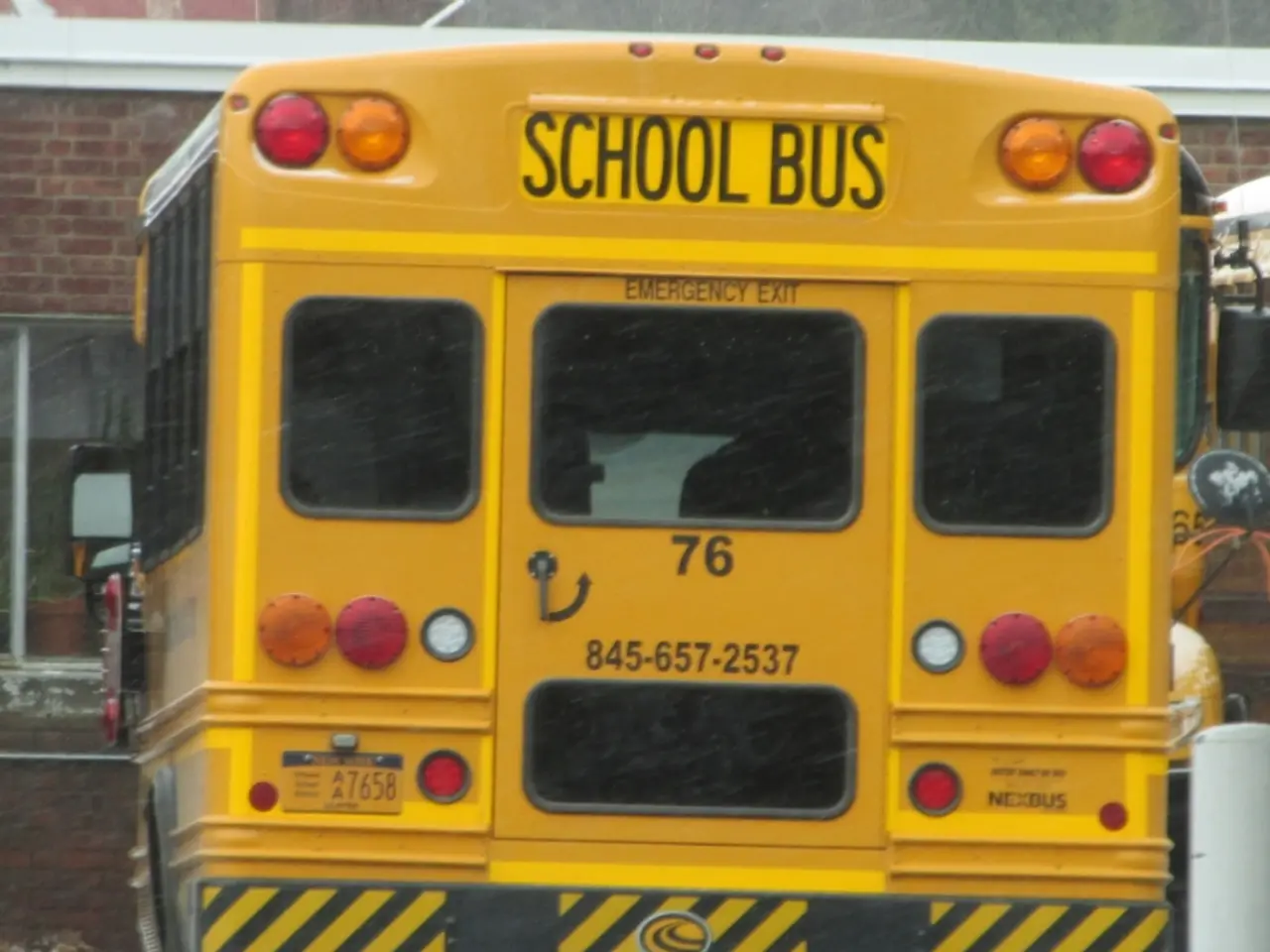Strategies for Nurturing Physical Growth in Young Childhood
Early Childhood Physical Development: Building a Strong Foundation for Learning and Emotional Regulation
Physical development in early childhood plays a pivotal role in shaping a child's future, laying the groundwork for effective learning and emotional regulation. This development encompasses both gross motor skills and fine motor skills, each contributing uniquely to a child's growth and development.
Gross motor skills, which involve large muscle movements, are essential for a child's physical development. These skills include sitting independently, crawling, walking, and running. By the age of 2, children develop motor control by lifting and turning their heads, rolling over, sitting up, crawling, and beginning to walk. As they grow older, between 2 and 3 years, they increase their physical confidence and coordination by running short distances, climbing safely, walking upstairs with assistance, and feeding themselves using spoons. By the age of 3 to 4, toddlers begin to climb stairs without help, and by 4 to 5, preschoolers start to hop, skip, and climb with coordination.
Fine motor skills, on the other hand, focus on smaller muscle coordination. These skills enable tasks like grasping objects, stacking, and manipulating toys. Toddlers aged 3 to 4 years old use scissors and begin drawing shapes, while preschoolers aged 4 to 5 years old write basic letters and manipulate zippers.
The development of these physical skills has far-reaching effects on a child's learning and emotional regulation. Gross and fine motor skills allow children to explore and interact with their environment, fostering curiosity and problem-solving skills. Fine motor skills, such as holding crayons or turning pages, directly impact early literacy and creativity. Success in motor tasks provides children with a sense of autonomy and confidence, which supports self-regulation by enhancing self-awareness and impulse control, elements crucial for managing emotions.
Moreover, parental support during physical development, such as providing encouragement or comfort when a child struggles with new movements, nurtures emotional resilience and social-emotional learning. Respectful and accepting parenting styles correlate with better emotional outcomes, which in turn bridge to cognitive and physical growth. Emotional development acts as a core mediator integrating various developmental domains, demonstrating the interconnectedness of physical skills with learning and emotional regulation.
In addition to supporting learning and emotional regulation, physical development in early childhood also helps children build strength, coordination, and control over their bodies. Regular movement enhances concentration and problem-solving abilities, while activities like swimming, taekwondo, creative arts, and outdoor learning further enrich a child's physical development. Preschoolers aged 4 to 5 years old stay active for longer periods during play, balancing on one foot and pedaling tricycles. Toddlers aged 3 to 4 years old kick and throw a ball with more control.
In conclusion, the development of gross and fine motor skills in early childhood lays the foundation for effective learning and emotional regulation. By fostering autonomy, interaction with the environment, and self-control, and with nurturing caregiving further enhancing these connections, physical development plays a crucial role in shaping a child's future.
- Encouraging children's development of gross motor skills through sports like swimming and taekwondo can further enhance their physical development and problem-solving abilities.
- The arts, such as creative drawing or manipulating clay, improve fine motor skills in children, contributing to early literacy and creativity.
- A well-rounded curriculum for early education should include both physical education and arts, promoting personal growth and self-development.
- Health and wellness programs focusing on fitness and exercise for children can help them develop a healthier lifestyle from an early age.
- Home and garden projects, like planting seeds or building birdhouses, provide hands-on learning opportunities that help children strengthen their fine motor skills.
- Teachers play a vital role in fostering emotional regulation and social-emotional learning by providing support and encouragement during children's physical development.
- Providing opportunities for children to engage in various learning activities, such as arts, sports, and home projects, not only supports their physical development but also helps in their overall educational growth.
- Strong emotional regulation skills developed through physical activities and supportive caregiving can help children navigate their academic journey with confidence and success.




